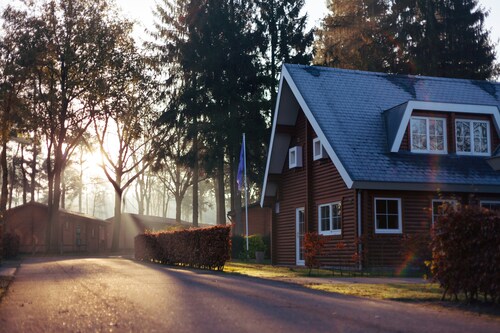As we navigate through different chapters of life, our living spaces evolve with us, adapting to our needs and aspirations. In this light, retirement communities have undergone significant transformation over the years, embodying a shift towards lifestyles that champion autonomy, wellness, and social connection.
This blog post delves into the latest trends and innovations shaping the future of retirement living, offering insights into how these communities are redefining the experience of embracing one’s enriching years after a lifetime of adventure and achievement.
Join us as we explore how retirement communities are not just changing but are revolutionizing how life is lived in retirement communities in Alberta.
Technology
One of the most compelling trends in retirement living is the use of cutting-edge technology. This trend appeals to residents because it offers enhanced independence and comfort, allowing them to retain their personal routines and lifestyle choices within their own spaces.
Advances such as smart home devices, health monitoring systems, and telemedicine services make enhancement possible. These technologies empower individuals to manage their daily lives efficiently while having quick access to assistance when needed.
Living in a retirement community that embraces technological solutions means that residents can enjoy the familiarity of their own home while benefiting from an underlying network of support, prioritizing safety and well-being without compromising their autonomy or sense of agency.
Sustainable, eco-friendly designs
The rise of sustainable and eco-friendly designs within retirement communities reflects a broader societal shift towards environmental consciousness. These designs resonate with residents progressively seeking to minimize their ecological footprint, live in harmony with nature and contribute to the planet’s health for future generations.
These designs are not just about energy efficiency and reducing waste; they aim to establish a symbiotic relationship between the built environment and the natural world, reducing operational costs and enhancing living spaces’ visual and atmospheric qualities.
By incorporating these types of elements, communities underscore a commitment to wellness for the residents and the environment around them. This alignment with values of stewardship and responsibility makes eco-friendly retirement communities especially appealing to those who wish to continue a lifestyle rooted in mindfulness and sustainability.
Personalized care methods
Personalized care methods stand at the forefront of innovation within retirement communities, offering a more tailored approach to wellness and support. This trend is gaining traction because it addresses residents’ preferences and needs, moving away from the outdated one-size-fits-all model.
These personalized care plans are developed collaboratively with the input of healthcare professionals, family members, and, most importantly, older adults. This inclusive strategy ensures care regimens that are not only effective but also respect the dignity and personal choices of each resident.
By focusing on the entirety of a person’s well-being, these person-centred practices embody a holistic approach to care that is both empowering and affirming, resonating deeply with a generation that values independence and self-determination.
Mental health and emotional well-being services
Alongside the rising awareness of the importance of mental health, retirement communities have begun to emphasize emotional well-being as a core component of their services.
Recognizing that a fulfilling life encompasses more than physical health, these communities are integrating programs and resources tailored to enrich their residents’ mental and emotional health. This trend mirrors a societal acknowledgment that well-being is multifaceted, requiring support for mental, emotional and social health to thrive truly.
Customized programs such as peer support groups, counselling services and mindfulness activities are increasingly common, offering residents avenues to nurture their minds and bodies.
Retirement communities reinforce the notion that mental health is integral to overall wellness by proactively including these services. This comprehensive perspective attracts those who seek environments where they feel holistically supported.
Conclusion
As we’ve explored, the landscape of retirement communities continually evolves, reflecting the priorities and values of those entering this phase of life.
Innovations such as aging in place with technology, sustainable, eco-friendly designs, personalized care methods, and an increased focus on mental health and emotional well-being are not just trends; they are responses to the growing desire for a retirement experience that is vibrant, dignified and aligned with individual lifestyles and beliefs.
This new era of retirement living emphasizes the importance of autonomy, wellness and social engagement. It offers a blueprint for a future where retirement is not a withdrawal from life but a continuation of living it to its fullest. As our society progresses, retirement communities stand as a testament to the enduring spirit of innovation, adapting to meet the needs and aspirations of each new generation.






